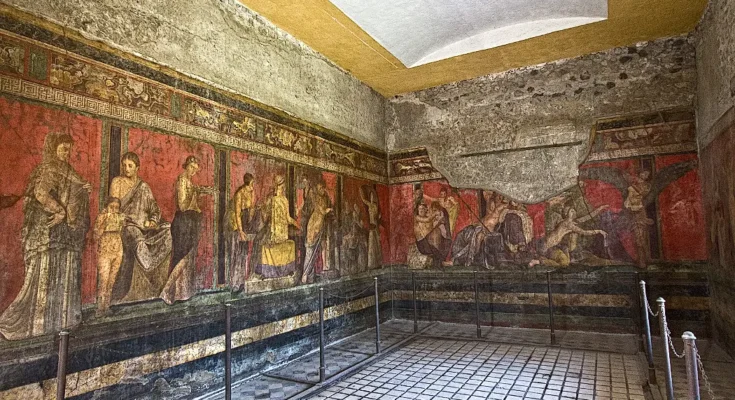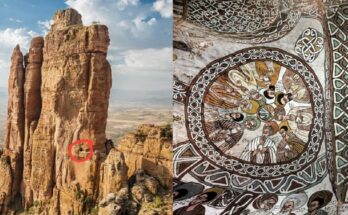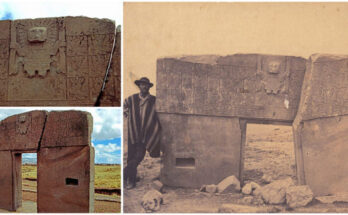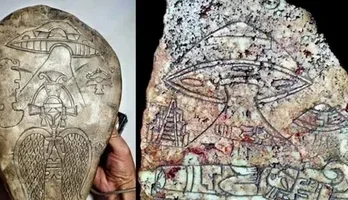VILLA OF THE MYSTERIES
It is named after the hall of mysteries located in the residential part of the building, which faces the sea. A large continuous fresco that covers three walls, one of the most preserved ancient paintings, depicts a mysterious rite, that is reserved for the devotees of the cult. The scene is linked with Dionysus, who appears on the central wall with his wife, Ariadne.
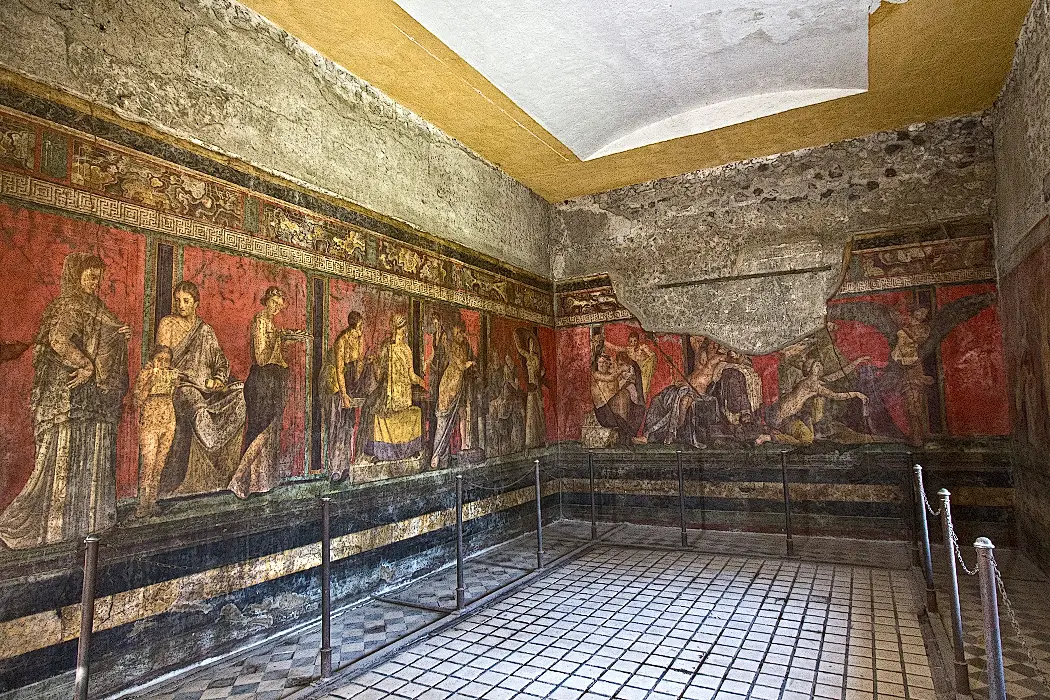

Female figures as well as fauns, maenads and winged figures are seen on the side walls, engaged in various ritual activities. Besides Dionysian ecstasy expressed in dancing and drinking wine, one sees the ritual flagellation of a young girl resting on the lap of a seated woman (bottom right). The other rooms also preserve wonderful examples of second style wall decoration, that is with depictions of architecture. Egyptian inspired miniature paintings are seen in the tablinum.
The villa also includes an area intended for the production of wine with a rebuilt wooden press. The complex dates back to the 2nd century BC but was given its current shape in 80-70 BC, which is the same period of the frieze of the mysteries.
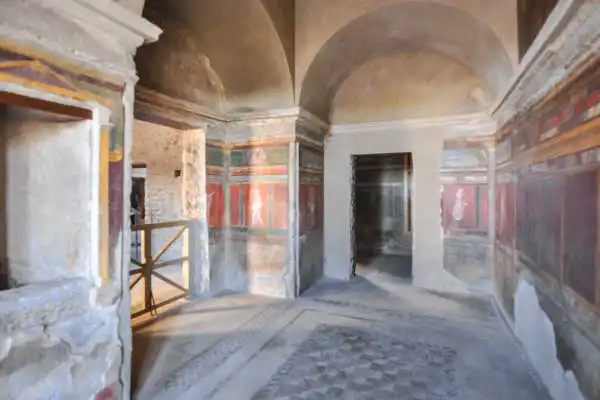

Pompeii is known for its abundance of amazing sites, preserved in time by the flowing ash and pumice that covered the city in AD 79. From the ornate amphitheatres to the giant columns of the forum, the grand Temple of Isis and the Stabian Baths, you can easily fill a memorable day meandering around this incredible landmark.
But one of the stranger sites that is sure to fascinate you on your visit to Pompeii is the Villa dei Misteri, otherwise known as “the Villa of Mysteries”. The well-preserved suburban villa, located right on the outskirts of Pompeii, is famous for its frescoes, housed in one room and detailing the mysterious initiation rites of a woman into a Dionysian mystery cult.
What makes the Villa of Mysteries such a fascinating site is the way in which scholars haven’t been able to fully interpret the frescoes, leaving the bizarre scenes largely open to the viewer’s interpretation (and what they may have read prior to visiting!).
The Villa of Mysteries makes up part of Pompeii’s fascinating history, and so what are some of the other amazing sites in this once great Roman city?
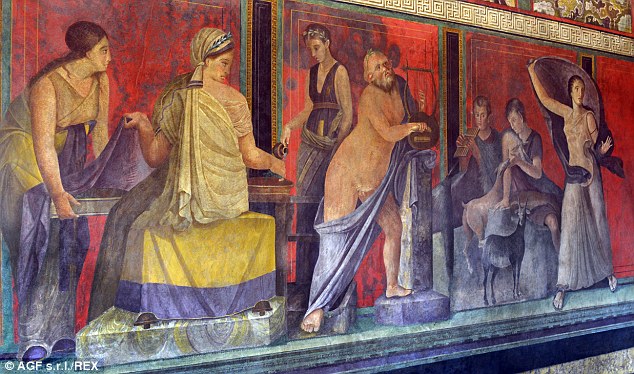
Date of excavation: 1909-1910; 1929-1930.
The Antiquarium
Pompeii’s antiquarium is a great place to start before actually wandering the grounds of this ancient city. The antiquarium serves as a museum, housing important artefacts that reflect everyday life in the city before it was destroyed by Mount Vesuvius’ wrath.
The Forum
Pompeii’s forum was once the center of town life, where decisions were made and judgements passed down. The marvellous columns of the forum remain magnificently intact, while the forum itself is bordered by some of Pompeii’s most impressive buildings, including the Temple of Jupiter and the basilica.
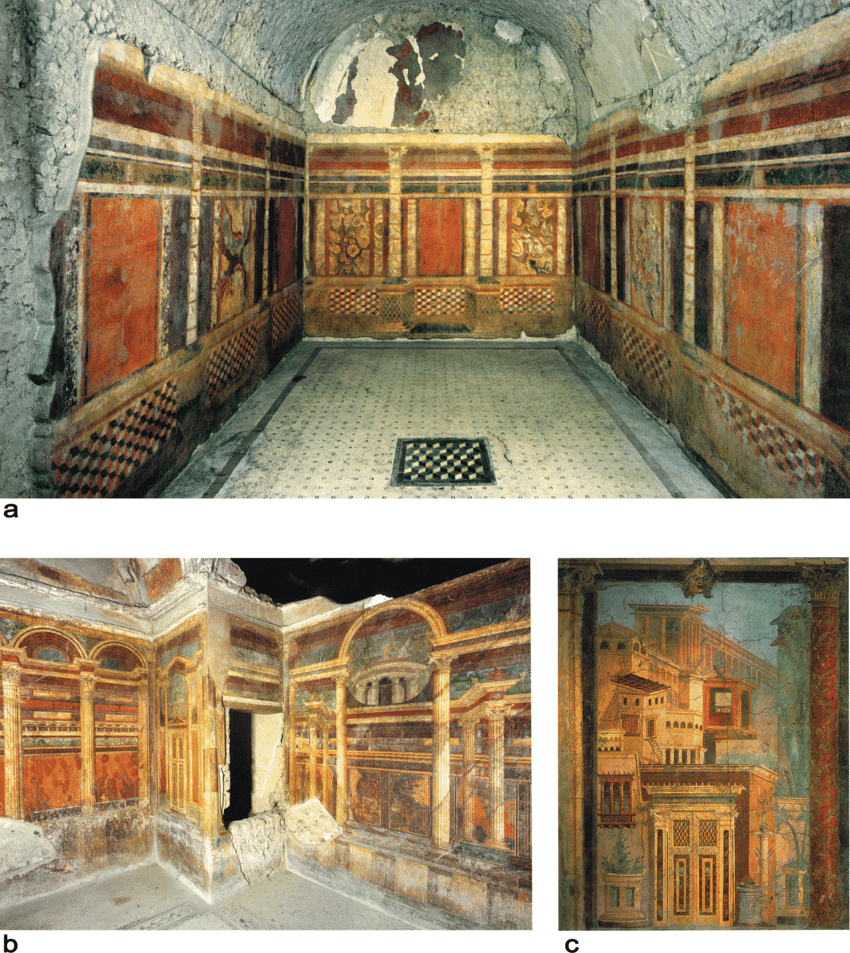
The Theatres
Because no Roman city was complete without at least one theatre. Luckily for history lovers, Pompeii has two, with the Teatro Grande and Teatro Piccolo displaying the town’s love for entertainment both big and small.
The House of Menander
Another well-preserved house on the grounds of Pompeii, the House of Menander was owned by a wealthy merchant who really wanted his neighbours to know of his great status. The entrance is flanked by pillars with Corinthian capitals, leading to a spectacular home complete with intact temple, atrium and scenes depicting The Iliad.
With so many incredible sites to see at Pompeii, it’s certainly best to allow yourself at least half a day to wander its stunning grounds – it’s totally worth the experience!
